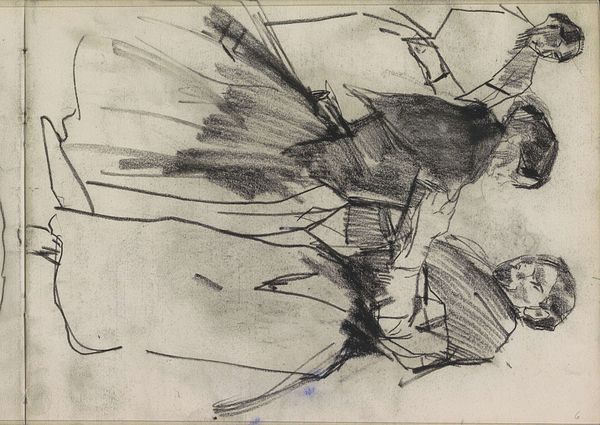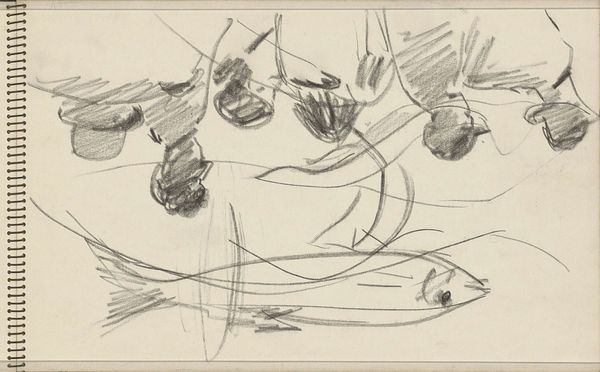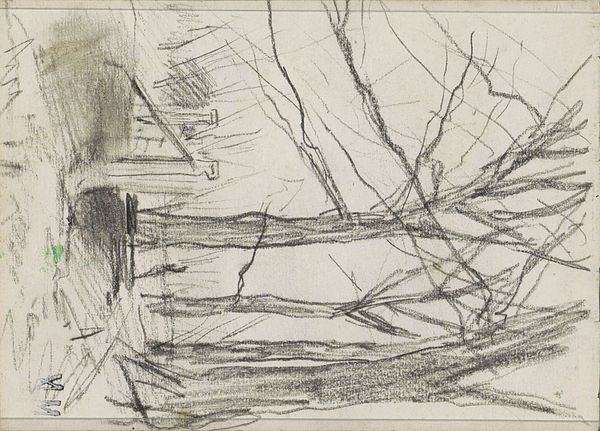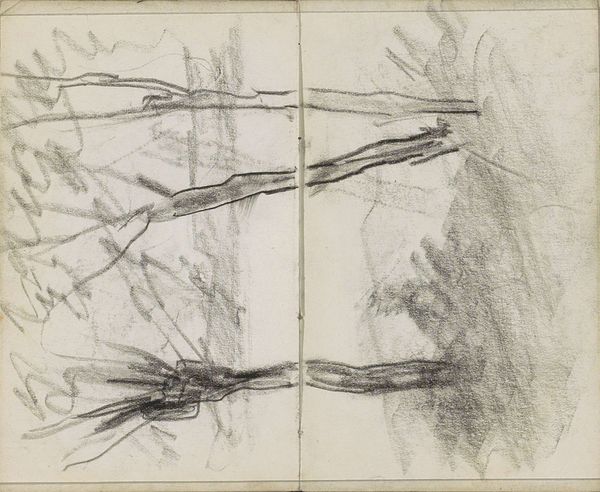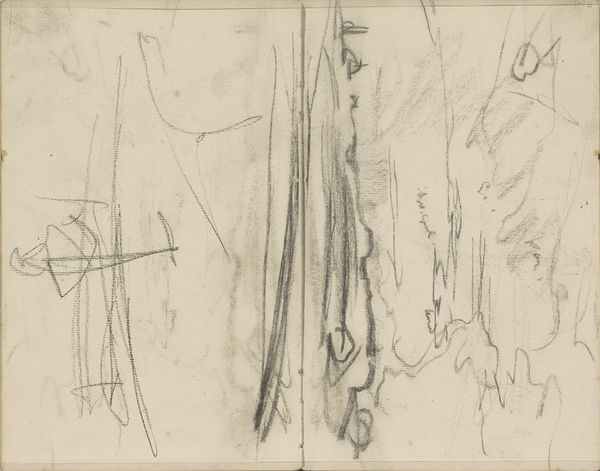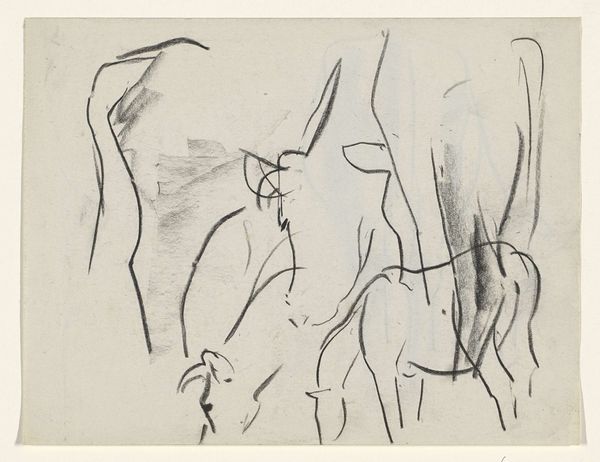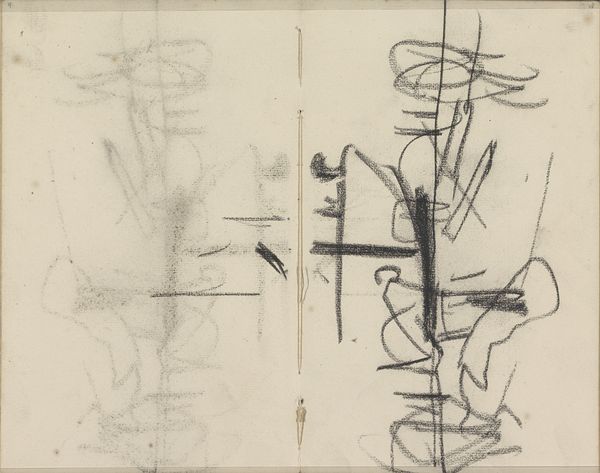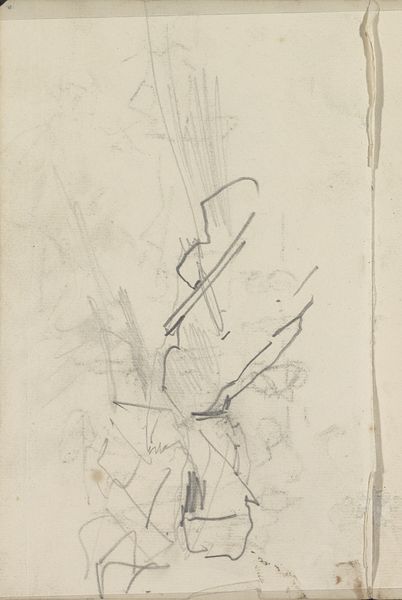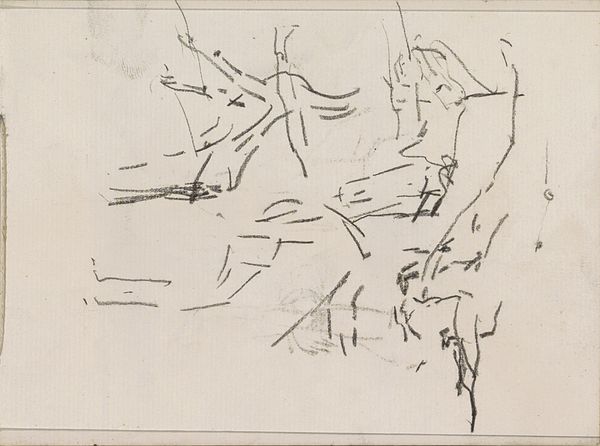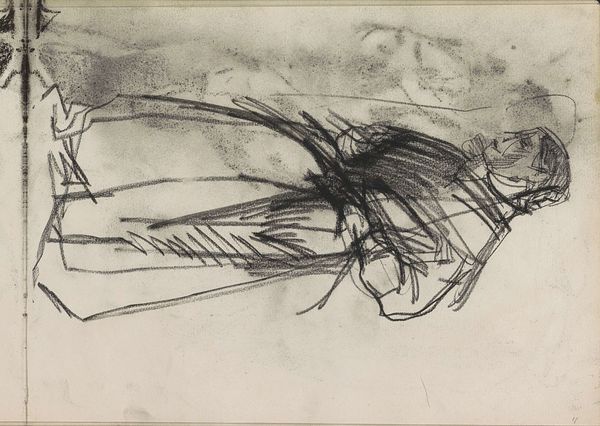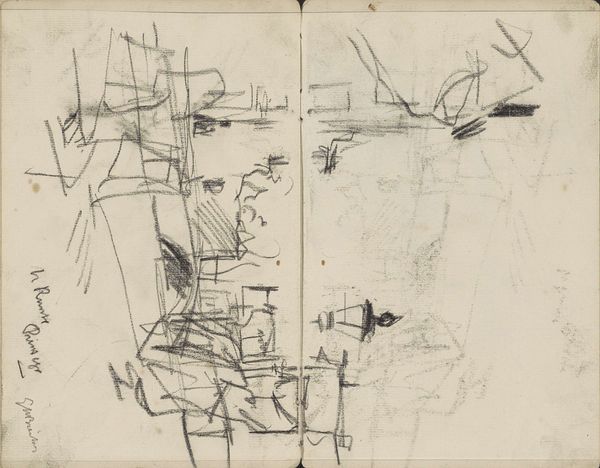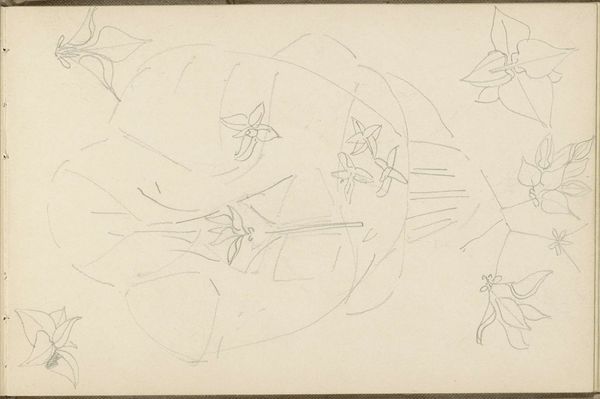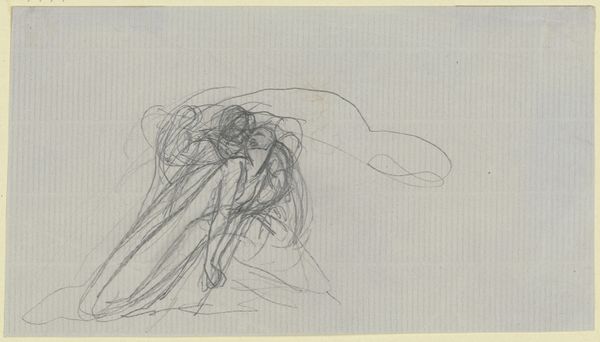
Copyright: Rijks Museum: Open Domain
Editor: This is Isaac Israels' "Three Standing Women," created around 1892-1900. It’s a pencil drawing on paper, and I'm struck by how unfinished it feels, almost like a fleeting glimpse. What can you tell me about it? Curator: Consider the materiality. It’s pencil, accessible and readily available. This challenges the assumed hierarchy of 'fine art'. The choice of a humble medium and the rapid strokes imply a focus on capturing movement or a momentary impression, perhaps in a busy urban environment. Think about where Israels worked. What sort of imagery was typical and aimed for in those places and times? Editor: I hadn’t thought of the pencil as a conscious choice to democratize the art-making process! I suppose I'm used to thinking about drawings as studies for paintings. Curator: Exactly! Was this study a process of quickly documenting everyday labor and female existence or a search for more elaborate art pieces, involving higher-class or biblical context. What if we viewed it, not as a preparatory sketch, but a finished piece? Does that influence your experience of it? What if the artist couldn’t find financial funding, thus wasn't capable of achieving the aim he wished to? Editor: That shifts things. Thinking of it as complete makes me notice the composition and the almost chaotic energy created by the swirling lines in the skirt. Curator: And what does that energy communicate about the subject of the drawing, about their role and their work and means? What does the process suggest about the artist’s attitude towards the women? A deliberate artistic expression of labor is the focus rather than an artistic error caused by bad timing. Editor: It gives a sense of immediacy, like a snapshot. I am understanding more the intention rather than a simple circumstance of its production, even if its 'simple production' leads the whole way! Curator: Indeed! So this rough drawing, accessible in both medium and subject, allows for a different perspective on labor and art production itself, making us question established conventions. It can have greater symbolic significance than its plain vision may portray.
Comments
No comments
Be the first to comment and join the conversation on the ultimate creative platform.
